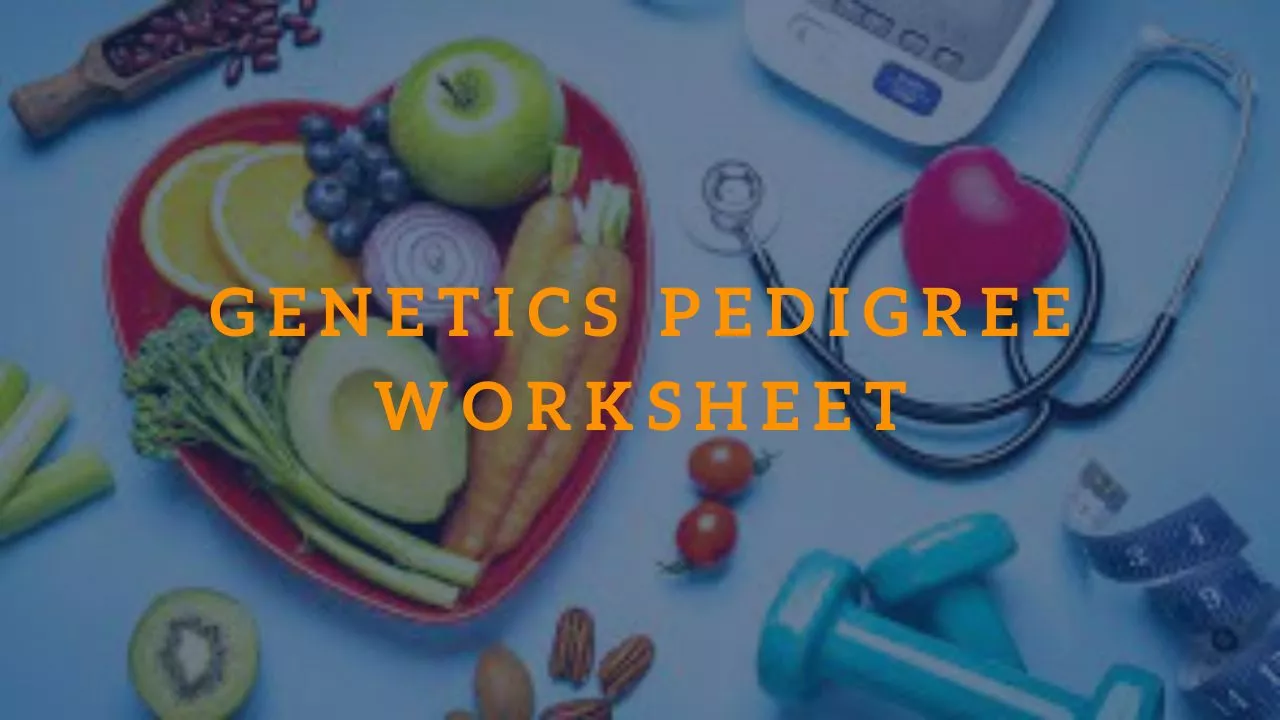If you are a student of genetics, you may have heard about the genetics pedigree worksheet, which is a graphical representation of a family tree that exhibits the occurrence and appearance of hereditary traits across generations. This worksheet is widely used in genetics to study the inheritance of traits from parents to offspring.

Why Use Genetics Pedigree Worksheet?
The genetics pedigree worksheet is an essential tool used to study the inheritance of traits in families. It helps geneticists to identify patterns of inheritance, track the occurrence of diseases, and map out the family history of traits. By studying a pedigree chart, geneticists can predict the probability of a child inheriting a particular trait from their parents.
How to Create a Genetics Pedigree Worksheet?
To create a genetics pedigree worksheet, you need to follow some basic steps. Firstly, identify the family members for the pedigree, including the parents, siblings, and offspring. Secondly, determine the genetic traits that you want to study, such as eye color, hair color, or any disease. Lastly, use symbols to represent the family members and the traits they possess.
Common Symbols Used in Genetics Pedigree Worksheet
There are various symbols used in genetics pedigree worksheet, which represents different family members and their traits. Some of the common symbols used in the worksheet include a circle for females, a square for males, a shaded symbol for individuals who have the trait, and an unshaded symbol for individuals who do not have the trait.
Types of Inheritance Patterns
There are different types of inheritance patterns that can be observed in a genetics pedigree worksheet. These include autosomal dominant, autosomal recessive, X-linked dominant, and X-linked recessive. By studying the pedigree chart, geneticists can determine the type of inheritance pattern that is present in a family.
Autosomal Dominant Inheritance Pattern
In autosomal dominant inheritance, the trait is passed down from one generation to the next. If one parent has the trait, there is a 50% chance that their offspring will inherit the trait. The trait is present in every generation of the family.
Autosomal Recessive Inheritance Pattern
In autosomal recessive inheritance, the trait is passed down from both parents who are carriers of the trait. If both parents have the trait, there is a 25% chance that their offspring will inherit the trait. The trait may skip generations in the family.
X-Linked Dominant Inheritance Pattern
In X-linked dominant inheritance, the trait is passed down from one parent to the next through the X chromosome. If the mother has the trait, there is a 50% chance that their offspring will inherit the trait. The trait is present in every generation of the family.
X-Linked Recessive Inheritance Pattern
In X-linked recessive inheritance, the trait is passed down from both parents who are carriers of the trait through the X chromosome. If both parents have the trait, there is a 25% chance that their offspring will inherit the trait. The trait may skip generations in the family.
Applications of Genetics Pedigree Worksheet
The genetics pedigree worksheet has various applications in genetics. It is used to study the inheritance of traits, track the occurrence of diseases, diagnose genetic disorders, and determine the risk of passing on genetic traits to offspring.
Limitations of Genetics Pedigree Worksheet
The genetics pedigree worksheet has some limitations. It relies on self-reported family history, which may be inaccurate or incomplete. In addition, it may not be suitable for studying complex genetic disorders that involve multiple genes and environmental factors.
Conclusion
In conclusion, the genetics pedigree worksheet is an essential tool used in genetics to study the inheritance of traits across generations. It helps geneticists to identify patterns of inheritance, track the occurrence of diseases, and map out the family history of traits. By studying a pedigree chart, geneticists can predict the probability of a child inheriting a particular trait from their parents.
See you again at our other interesting article!
